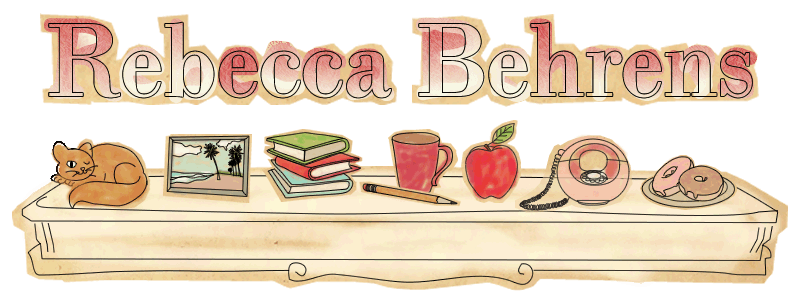I was at the Happiest Place on Earth on Monday, and it occurred to me that Disneyland is sort of live-action fiction. You wander through all of these very detailed, distinctive fictive neighborhoods, waiting in line to get on rides that simulate space or fairytale lands or somewhere under the sea (cue Sebastian), etc. The whole park is actually built above ground level–you’re walking over a series of tunnels that “cast members” use to travel to and from the different lands (in order to preserve the magic element of the park). I think the word for it is verisimilitude: everything has the appearance of truth but isn’t really true. It can feel a little like walking through a book.
But even if you immerse yourself totally in the experience, it’s easy to get to reminded that what’s going on around you isn’t real. All you have to do is turn around (or look up at the rafters) and you see carefully concealed emergency exits, strings of lights, security cameras, animatronic ghosts and pirates and animals repeating the same canned movements. Most rides depend on the rider keeping his or her butt in the seat (and hands safely inside the ride at all times!), facing forward, never turning to look back behind. Of course, people do turn around and look up.
 |
| I am clearly not “waiting for something to happen” here. |
Not all works are striving for verisimilitude with the real world, but whatever environment you are creating should be as seamless as possible. You want your reader to believe in its authenticity. Whether you’re building the world of a suburban high school or the kingdom of the Mer-people, remember that your readers will be looking in all directions.



Great post! You speak the truth here, no veri-whats-it at all!
And though I love the entire Harry Potter series, I always get thrown out of the story a bit in the 4th book during the fight when Harry’s parents appear, because in my edition Harry’s dad appears before his mother, which isn’t right. I heard they fixed this in later printings though, so at least they caught it eventually.
Thanks, Shalena!
I didn’t know that about the Harry Potter books. At least they caught it! There’s a (very unimportant, but still obvious) typo on the back jacket of GIRL WITH A DRAGON TATTOO that has made it through 4 printings.
Great post! I am terrified of rides actually!
I just started my own blog. Please stop by if you can. Thank you
Misha
http://books-love-affair.blogspot.com/
Cool post! You should check out Baudrillard’s “Simulation and Simulacra”– he uses a different vocabulary to discuss Disneyland, but also comments on how Disneyland presents the visitor with a sort of fake version of the real world, which in turn affects and distorts how we perceive the “real” world (to the point that we stop being able to really perceive what is actually real).
@Megan I have to check that out. I’m glad I’m not the only person to go to Disneyland and spend the day full of existential thoughts lite.